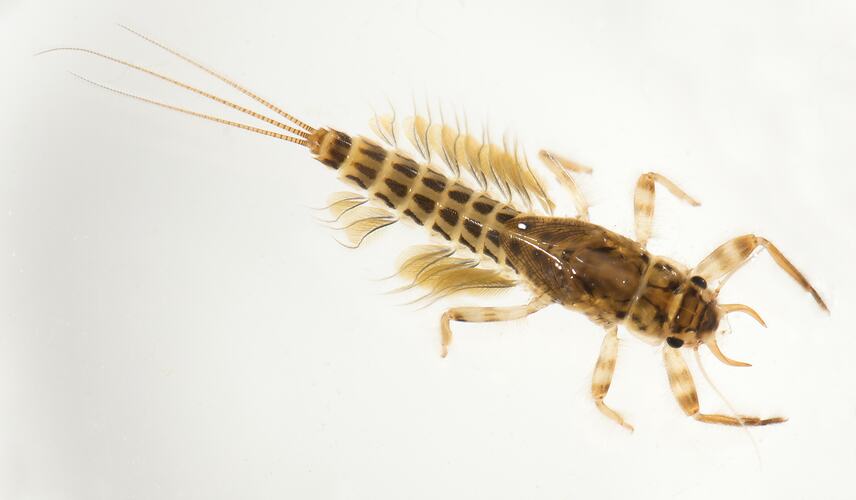General Description
The horns on the head of the larval stage of this species immediately identify the genus as Jappa. A dark stripe is also obvious along the underside of the abdomen. The overall length for a mature larva including the horns and the tails is 2-3 cm. Adults have two pairs of wings, with the forewings larger than the hindwings. Adults are about the same length as larvae and have the same dark line on the underside of the abdomen.
Biology
The aquatic larval stages of this mayfly burrow into soft sediment and can be found up to 30 cm below the surface of the river bed. They eat small particles of organic material. Jappa strigata has two generations per year: a winter generation with adults emerging in spring and a summer generation with adults emerging in late summer or autumn. The adults, like all mayflies, are short lived (a few days at most) and do not feed. They swarm, often above water, where they mate and the females shed eggs directly into the river.
Distribution
Eastern Australia from Queensland to Victoria.
Habitat
Bottom sediments of rivers and streams, often where the sediments are of sand and other fine material.
More Information
-
Animal Type
-
Animal SubType
-
Brief Id
This small mayfly has a larval stage with horns on the head and three tail filaments. The legs and abdomen are hairy with broad gills.
-
Colours
Brown, Yellow, Purple
-
Maximum Size
3 cm
-
Habitats
-
Diet
Organic matter
-
Endemicity
-
Commercial
No
-
Taxon Name
-
Scientific Author
(Eaton, 1871)
-
Common Name
Common Horned Jappa
-
Other Names
Mayfly
-
Kingdom
-
Phylum
-
Subphylum
-
Class
-
Order
-
Family
-
Genus
-
Species Name
strigata

